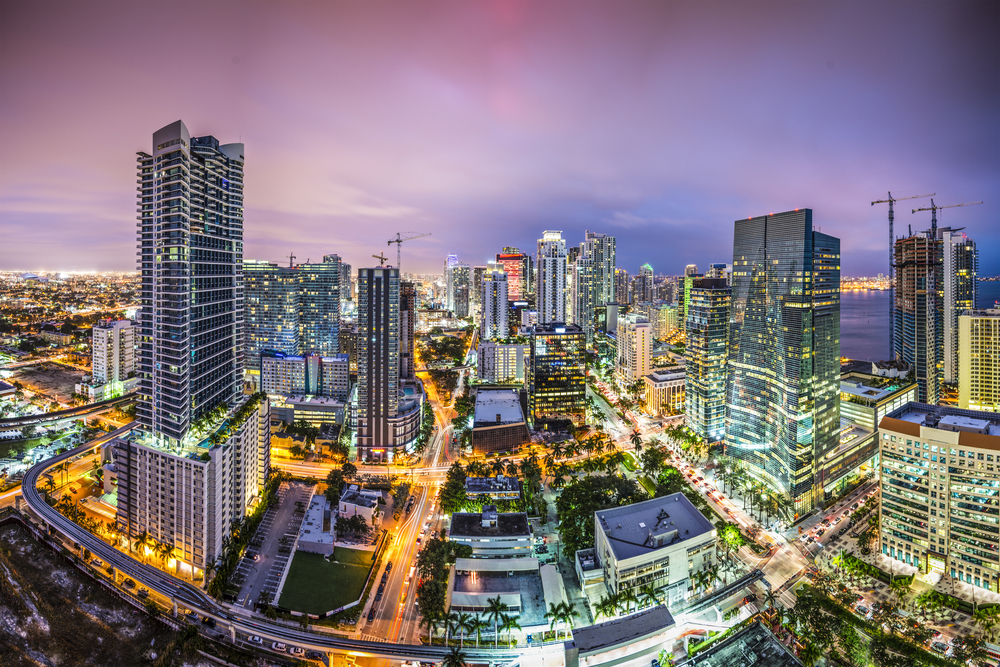8 benefits of Virtual Reality in Real State
Technology advances and the real estate sector - many times stopped in time - begins to benefit from it.Virtual reality has come to revolutionize our...
Tonic3 develops and executes strategies that drive profit through Digital Transformation. Practically that means we are built to help clients hone the right strategy, implement the right technology, and build the right long-term capabilities to deliver lasting transformation.
Industries
We believe that effective technology helps people succeed in their daily lives. So we help our clients engineer useful technology for their clients, partners, and employees. That translates to every major industry, but over the years we’ve developed several core areas of expertise.
4 min read
 Anahi Kochgorian
:
May 16, 2022 6:45:56 PM
Anahi Kochgorian
:
May 16, 2022 6:45:56 PM

This immersive technology has the ability to greatly transform every facet of life, opening doors for industries like tourism to enrich the experiences of their customers.
Augmented reality, or AR, is a digital technology that can alter and enhances people’s perceptions of their physical surroundings when they view them through a particular device. This technology is similar to virtual reality, but unlike VR, AR doesn’t replace the real-world environment, it augments it by overlaying digital components onto it. Cool, huh?
Typically, augmented reality is experienced using a smartphone, tablet, or similar device, which can be used to navigate and interact with digital components. Because of this, it’s less expensive for the consumer than most headsets and other devices traditionally used for virtual reality, making the technology more accessible. In many cases, AR also works hand-in-hand with other mobile technologies such as cameras and GPS tracking, which can be used to enhance the experience even further.
According to a Statista report, the augmented reality market is predicted to grow from US$5.91 billion to US$198 billion by 2025. By 2023, the report estimates that there will be around 2.4 billion mobile AR users worldwide.
Augmented reality can be used to create 360-degree virtual environments that allow users to preview sites before attending or visit places they would otherwise never be able to see. By transforming the way people observe their surroundings, these developers can improve user experience (UX) and interactions. Because of this, AR is quickly becoming a popular tool for travel app developers, who can use the technology to improve their products and attract businesses and marketers.
The Scope of Augmented Reality in the Travel and Tourism Industry
With AR applications, users can learn information about the site or service they want to visit or hire in a more engaging way and participate in more interactions, making for a more immersive and useful user experience design. This gives a huge advantage to AR-based travel apps over non-AR-based apps and allows them to stand out in such a competitive field.
Many in the travel industry are already using augmented reality to better serve their customers. Offering boundless potential to engage with guests and travelers, AR empowers businesses like these to provide information to potential customers in an engaging and educational manner, such as with 360-degree visual tours and 3D views. For example, AR can be used to create room and lodging tours for people to view and explore. Providing such interactive ways to gain information can increase demand for bookings, as customers feel more confident and informed about their choice.
Imagine you’re in your hotel room and require housekeeping services or wish to explore nearby destinations and available services. AR could allow you to use your smartphone or tablet to access the hotel mobile app and interact with markers to learn more about the facilities and have your questions answered. Or, with the help of a mobile device, a map on the wall could become a way to explore nearby destinations and find travel times, allowing guests to plan out their day of sightseeing in a fun and easy way from the comfort of their hotel room. With a good user experience design, this creates an intuitive way for guests to effortlessly understand what’s available to them.
Tonic3’s design for Accor Hotels group
With augmented reality, interactive tours can be created for tourists to digitally visit destinations and landmarks. AR-based apps can also facilitate augmented tours of ancient locations and buildings that would otherwise be off-limits, better preserving them while still enabling users to learn about their history and cultural significance. By just pointing the camera of a mobile device at a building, an AR-based app can present a digital impression of everything visitors need to know about it! This also allows travelers to learn in real-time without the stress of navigating a language barrier with a traditional tour guide or tour experience.
One of the best examples of augmented reality in tourism is the Then and Now app, which takes users back in time, providing both valuable historical insights and a unique experience.
Immersive 360-degree VR experiences on long flights may be on the horizon, expanding travelers’ entertainment options beyond watching movies or surfing the web using the plane’s Wi-Fi. Virtual reality could even help some passengers ease their fear of flying by introducing them to the experience while still comfortably on the ground so they are ready for the real flight!
A major benefit of augmented reality is the capacity to enhance or alter the view of the world around us. With AR apps, tourists can view architectural artifacts in greater detail and learn more about them. For example, augmented reality applications can show how the area around the landmark looked in the past and create reenactments of historical events. It can also transfer the traveler into the future, showcasing buildings that are mere blueprints today so they can be viewed as if they already exist.
Check out an AR tour example here.
Through AR, travelers can easily see how different devices worked, view how prehistoric animals looked, and learn more about how art was created in a more engaging manner than a standard tour or informational plaque.
For instance, the Story of the Forest installation created by the National Museum of Singapore is an educational experience with game elements similar to Pokemon Go. With the help of an AR app, visitors can search for different plants and animals, having fun while learning.
Although traveling can be fun in and of itself, one way to make it even more engaging is to offer visitors location-based games like treasure hunts and challenges that involve collecting rewards. Gamified tours typically involve users scanning different images to activate augmented reality travel experiences or mini-games and are especially appealing to children.
Restaurants can use AR applications to showcase menus with interactive 360-degree views of dishes and their ingredients. In addition, several restaurants already use AR games similar to Pokémon Go to attract clients. AR can also be used to provide details about nearby restaurants, cafes, and bars to help users explore the area around them and find where to eat and drink.
The importance of augmented reality in the travel industry can’t be stressed enough. The potential of AR is enormous and presents a multitude of opportunities for growth. Not only does AR solve an array of tourists' pain points and make travel easier and more accessible, but it also enhances the overall experience. AR is capable of assisting in marketing while also improving customers’ experiences with hotels, cruise lines, restaurants, and other businesses in the industry.
Want to harness the power of virtual reality at your company?
Let us show you how to implement virtual reality in your next project!

Technology advances and the real estate sector - many times stopped in time - begins to benefit from it.Virtual reality has come to revolutionize our...

Today, many factors are involved when interacting with a customer via a website.
In a world driven by technological innovation, the beauty industry has not lagged behind in adopting cutting-edge solutions to enhance customer...